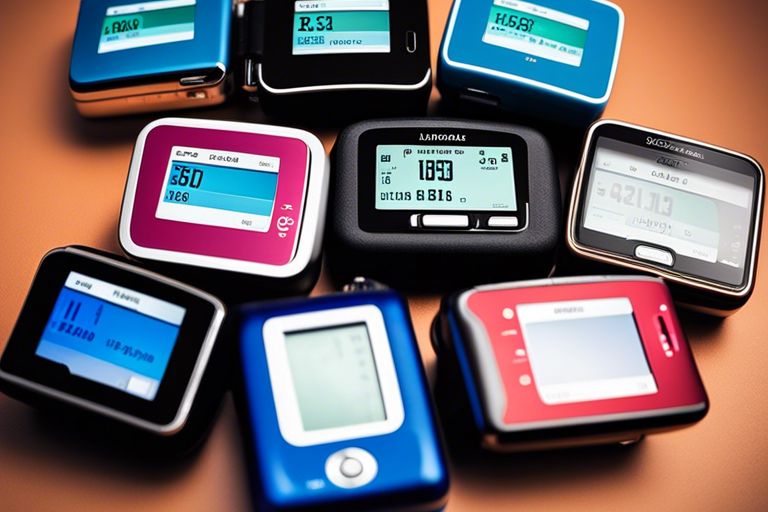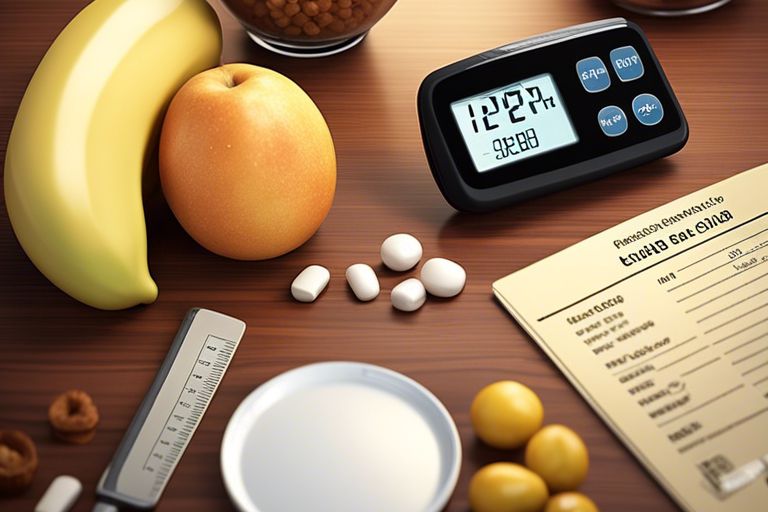Understanding the differences between Type 1 and Type 2 diabetes is crucial in managing these conditions effectively. While both are related to how the body regulates blood sugar levels, they have distinct characteristics. Type 1 diabetes is an autoimmune condition where the immune system attacks insulin-producing cells, requiring insulin therapy for management. On the other hand, Type 2 diabetes is often linked to lifestyle factors such as diet and exercise, with the body either not producing enough insulin or becoming resistant to its effects. By delving into the unique traits of each type of diabetes, individuals can make informed decisions about their treatment and lifestyle choices.
Key Takeaways:
- Insulin Production: Type 1 diabetes is characterised by the immune system attacking insulin-producing cells, while Type 2 diabetes is mainly due to insulin resistance.
- Age of Onset: Type 1 diabetes is commonly diagnosed in children and young adults, whereas Type 2 diabetes is often diagnosed in middle-aged or older adults.
- Treatment: Type 1 diabetes is typically treated with insulin therapy, whereas Type 2 diabetes is initially managed with lifestyle changes, oral medications, and possibly insulin later on.
- Cause: Type 1 diabetes is believed to be an autoimmune condition with genetic and environmental factors, whereas Type 2 diabetes is closely linked to obesity, unhealthy lifestyle choices, and genetic predisposition.
- Prevalence: Type 2 diabetes is more common, accounting for around 90% of all diabetes cases, while Type 1 diabetes makes up about 5-10% of diagnoses.
Understanding Type 1 Diabetes
Cause and Development
Type 1 diabetes is an autoimmune condition where the immune system attacks and destroys insulin-producing beta cells in the pancreas. This results in a lack of insulin, a hormone necessary for regulating blood sugar levels. The exact cause of this autoimmune response is not fully understood, but it is believed to involve a combination of genetic and environmental factors.
Signs and Symptoms
The signs and symptoms of type 1 diabetes can develop rapidly and include excessive thirst, frequent urination, extreme fatigue, sudden weight loss, and blurred vision. If left untreated, it can lead to a life-threatening condition called diabetic ketoacidosis.
In addition to the aforementioned symptoms, individuals with type 1 diabetes may also experience increased hunger, irritability, and mood changes. It is crucial to recognise these signs early on and seek medical attention promptly to prevent complications.
Management and Treatment Options
Managing type 1 diabetes involves a combination of insulin therapy, blood sugar monitoring, a healthy diet, regular exercise, and maintaining a healthy lifestyle. Insulin injections or the use of an insulin pump are necessary to replace the insulin that the body is unable to produce.
In addition to insulin therapy, continuous glucose monitoring systems and insulin pumps have revolutionised the management of type 1 diabetes, offering individuals better control over their blood sugar levels and reducing the risk of complications in the long term.
Understanding Type 2 Diabetes
Cause and Development
Type 2 diabetes occurs when the body becomes resistant to insulin or when the pancreas is unable to produce enough insulin to maintain normal blood glucose levels. Lifestyle factors such as obesity, lack of physical activity, and poor diet can increase the risk of developing type 2 diabetes. Genetics also play a role in predisposing individuals to this condition.
Signs and Symptoms
Common signs and symptoms of type 2 diabetes include increased thirst, frequent urination, unexplained weight loss, fatigue, blurred vision, and slow-healing wounds. It is important to note that some individuals with type 2 diabetes may not experience any symptoms initially, which is why regular screenings are crucial for early detection.
It is crucial to keep in mind that Type 2 diabetes symptoms can be mild at first, making them easy to overlook. It’s important to be aware of the signs and symptoms, as early diagnosis and management can help prevent complications such as heart disease, nerve damage, and kidney problems.
Management and Treatment Options
The management of type 2 diabetes typically involves lifestyle modifications such as adopting a healthy diet, engaging in regular physical activity, monitoring blood sugar levels, and taking medication as prescribed by healthcare professionals. In some cases, insulin therapy may be required to help control blood sugar levels effectively.
Effective management of type 2 diabetes also includes regular monitoring of blood pressure and cholesterol levels, along with routine check-ups with healthcare providers to assess the progression of the condition and adjust treatment plans accordingly. Education and support from healthcare professionals are key components in successfully managing type 2 diabetes and reducing the risk of complications.
Key Differences Between Type 1 and Type 2 Diabetes
Genetic and Environmental Factors
In Type 1 diabetes, genetic factors play a significant role, with individuals inheriting genes that make them more susceptible to the condition. Environmental factors such as viral infections can trigger the autoimmune response that leads to the destruction of insulin-producing cells in the pancreas. On the other hand, Type 2 diabetes is strongly linked to lifestyle factors such as diet, exercise, and obesity. Genetic predisposition also plays a role, but it is not the sole determining factor.
- The development of Type 1 diabetes is primarily influenced by genetic factors.
Insulin Production and Sensitivity
Type 1 diabetes is characterised by the immune system attacking and destroying beta cells in the pancreas, leading to little to no insulin production. In contrast, Type 2 diabetes involves insulin resistance, where the body’s cells become less responsive to insulin. This results in the pancreas producing more insulin to compensate, eventually leading to insulin production decline over time.
- The key difference lies in the mechanism affecting insulin production and sensitivity in each type of diabetes.
Age of Onset and Population Affected
Type 1 diabetes commonly manifests in children and young adults, although it can develop at any age. It accounts for about 5-10% of all diabetes cases and is more prevalent in individuals with a family history of the disease. In contrast, Type 2 diabetes is often diagnosed in adults over the age of 40, although rising obesity rates have led to an increase in cases among younger age groups.
- The age of onset and affected populations vary significantly between Type 1 and Type 2 diabetes.
Potential Complications
Both Type 1 and Type 2 diabetes can lead to serious complications if not managed properly. Type 1 diabetes may result in acute complications such as diabetic ketoacidosis, while Type 2 diabetes is associated with a higher risk of long-term complications like cardiovascular disease, kidney failure, and nerve damage. Regular monitoring, medication management, and lifestyle changes are crucial in reducing the risk of complications in both types of diabetes.
- Managing diabetes effectively can help mitigate the risk of developing severe complications in the long term.
Managing Diabetes
Lifestyle Adaptations and Monitoring
Managing diabetes requires a combination of lifestyle adaptations and regular monitoring. For type 1 diabetes, this involves monitoring blood sugar levels multiple times a day, adjusting insulin doses, eating balanced meals, and incorporating regular exercise into daily routines. Type 2 diabetes management often includes weight management, healthy eating, monitoring blood sugar levels, and regular physical activity. Lifestyle changes play a crucial role in managing both types of diabetes and can help in overall blood sugar control and reducing the risk of complications.
The Role of Medical Intervention and Care
Medical intervention and care are necessary components of managing diabetes, especially in type 1 diabetes where insulin therapy is necessary for survival. Type 2 diabetes may also require medication, such as oral hypoglycaemic agents or insulin, depending on individual needs. Regular check-ups with healthcare providers, including diabetes specialists, are crucial to monitor blood sugar levels, adjust treatment plans, and address any concerns or complications. Additionally, education on diabetes management, including self-care practices and lifestyle modifications, is necessary for individuals with diabetes to maintain their health and well-being.
Understanding the Difference Between Type 1 and Type 2 Diabetes
Type 1 diabetes differs from type 2 in several key aspects. Type 1 is an autoimmune condition where the body attacks its insulin-producing cells, requiring lifelong insulin therapy from diagnosis. On the other hand, type 2 diabetes is typically developed in adulthood, often as a result of lifestyle factors such as diet and exercise, and can sometimes be managed through lifestyle changes alongside medication. Understanding these distinctions is crucial for proper diagnosis and treatment of these two types of diabetes, highlighting the importance of individualised care and management plans based on the specific needs of each patient. Ultimately, recognising the differences between type 1 and type 2 diabetes can lead to better outcomes and improved quality of life for those living with these conditions.
FAQ
Q: What is Type 1 Diabetes?
A: Type 1 Diabetes is a chronic condition where the pancreas produces little or no insulin, which is necessary for converting sugar (glucose) into energy.
Q: What is Type 2 Diabetes?
A: Type 2 Diabetes is a metabolic disorder where the body becomes resistant to insulin or doesn’t produce enough insulin to maintain normal glucose levels.
Q: How do the causes of Type 1 and Type 2 Diabetes differ?
A: Type 1 Diabetes is mainly caused by an autoimmune response that destroys insulin-producing cells in the pancreas, while Type 2 Diabetes is often linked to lifestyle factors such as obesity and lack of physical activity.
Q: What are the typical age of onset for Type 1 and Type 2 Diabetes?
A: Type 1 Diabetes is usually diagnosed in children and young adults, although it can occur at any age. Type 2 Diabetes is more common in adults over the age of 45, but is increasingly being diagnosed in younger age groups due to rising obesity rates.
Q: How does the treatment approach differ for Type 1 and Type 2 Diabetes?
A: Type 1 Diabetes is managed with insulin therapy, as the body cannot produce insulin. Type 2 Diabetes may be initially managed through lifestyle changes such as diet and exercise, and medications are prescribed if blood glucose levels are not adequately controlled.




